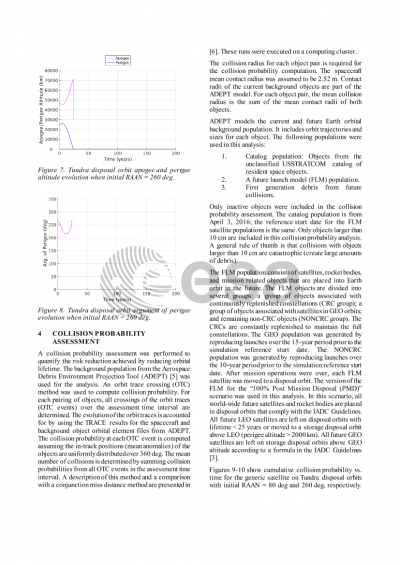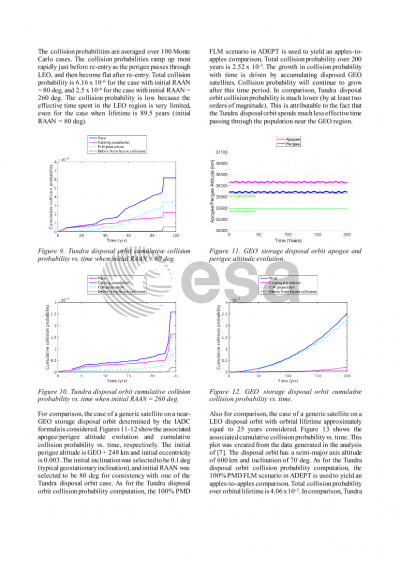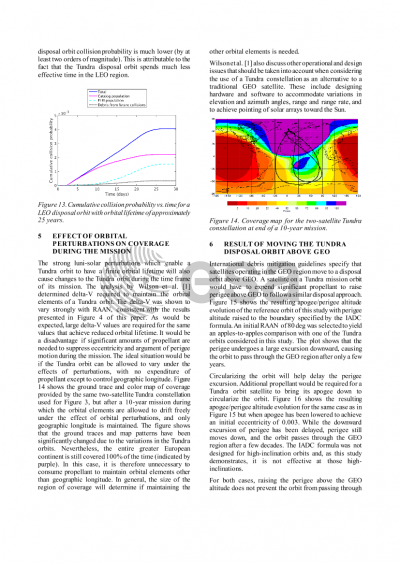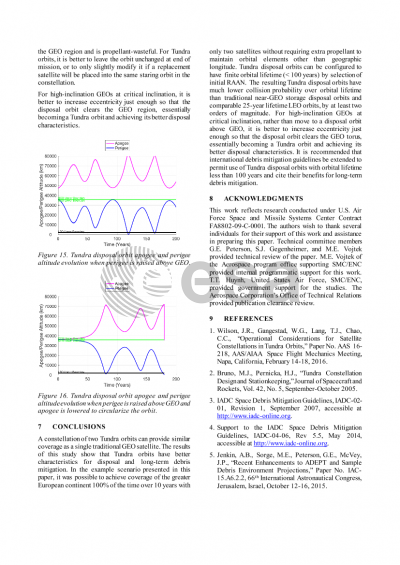Document details

Abstract
Tundra orbits have a 24-hour period, finite eccentricity (typically 0.2 to 0.3) and are highly-inclined. A Tundra orbit with frozen apsidal rotation (inclination of 63.4 deg) has similar ground coverage to that of a geosynchronous (GEO) orbit in that the satellite spends a large amount of time over a selected region on the surface of the Earth. Two to three Tundra orbits can provide similar ground coverage as a single GEO orbit. Tundra orbits are already currently used by satellites, for example the Sirius 1-3 satellites that were launched in 2000.
Tundra orbit elements undergo much larger variations due to luni-solar gravity than GEO orbit elements due to their higher inclination. In particular, there are large excursions in eccentricity. Depending on the configuration of the orbit, these eccentricity excursions can be large enough to cause perigee to dip into the atmosphere, resulting in eventual reentry. In contrast, disposal orbits near the GEO ring are very stable and do not undergo atmospheric reentry. There is no known natural mechanism to remove satellites in near GEO orbits. As a result, disposed GEO satellites will accumulate indefinitely in their disposal orbits and possibly collide with each other, generating large amounts of untrackable debris that can spread into the operational GEO ring. From a debris mitigation perspective, this makes the use of Tundra orbits more attractive than the use of GEO orbits.
This paper presents a detailed study of Tundra disposal orbits. Long-term propagations were performed using the precision integration code TRACE. Parametric variation runs were executed to understand the dependence of eccentricity evolution on right ascension of ascending node (RAAN). Plots of orbital element variation with time for various initial disposal orbit RAAN values were generated. The collision probability with background objects was assessed using a model of the current and future Earth orbital object population generated by the Aerospace Debris Environment Projection Tool (ADEPT).
Results showed that it was possible to induce atmospheric reentry to occur within 200 years for a broad range of RAAN values, and in some cases within 25 years, without requiring extra propellant. Results also showed that Tundra disposal orbits have low collision probabilities, even for lifetimes up to 200 years, because they spend brief amounts of time crossing the densely populated regions in low Earth orbit and near the GEO ring. Therefore, increased use of Tundra orbits instead of GEO orbits could have a significant effect in reducing overall collision risk and future collisional debris generation near the GEO region.
Preview









